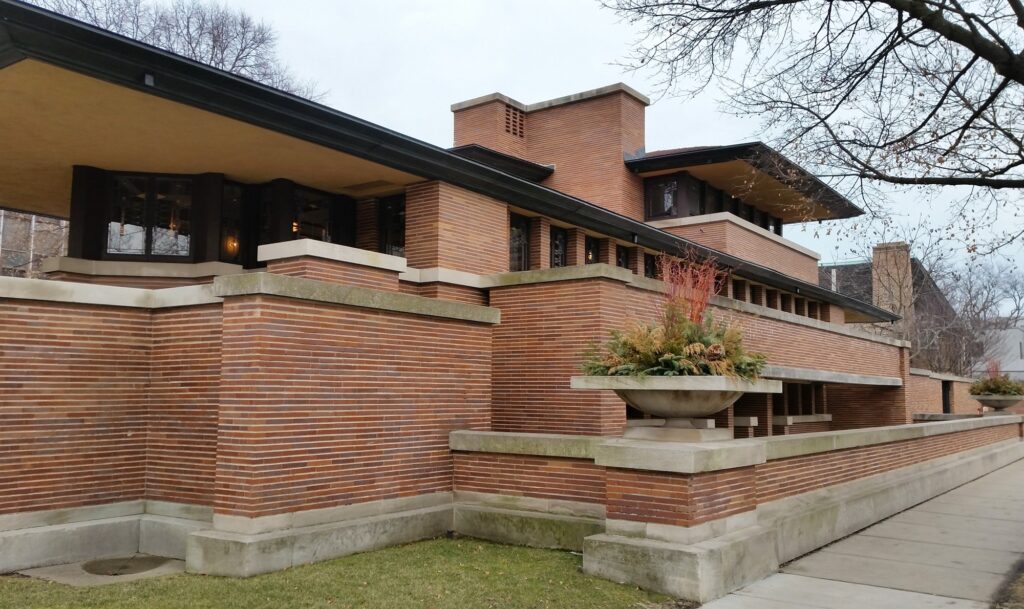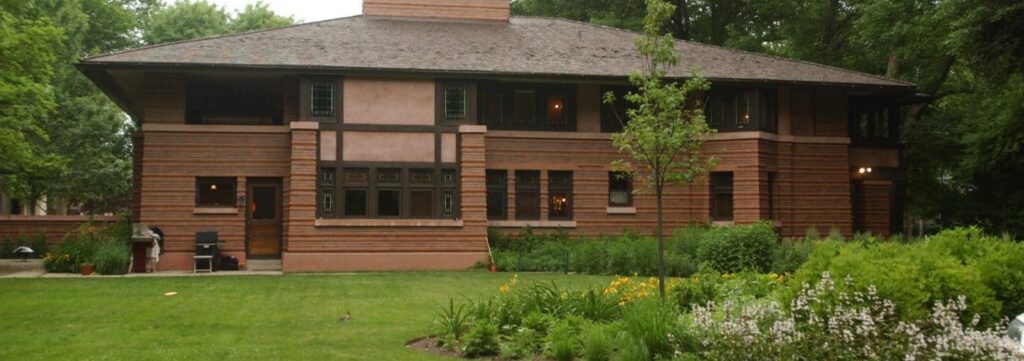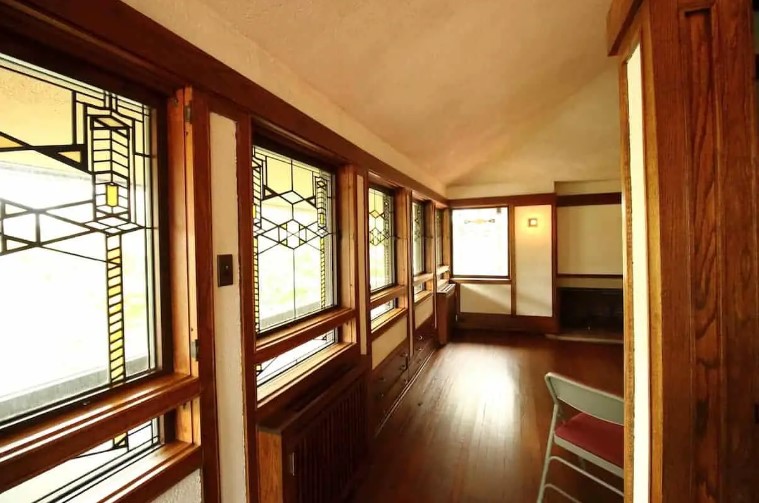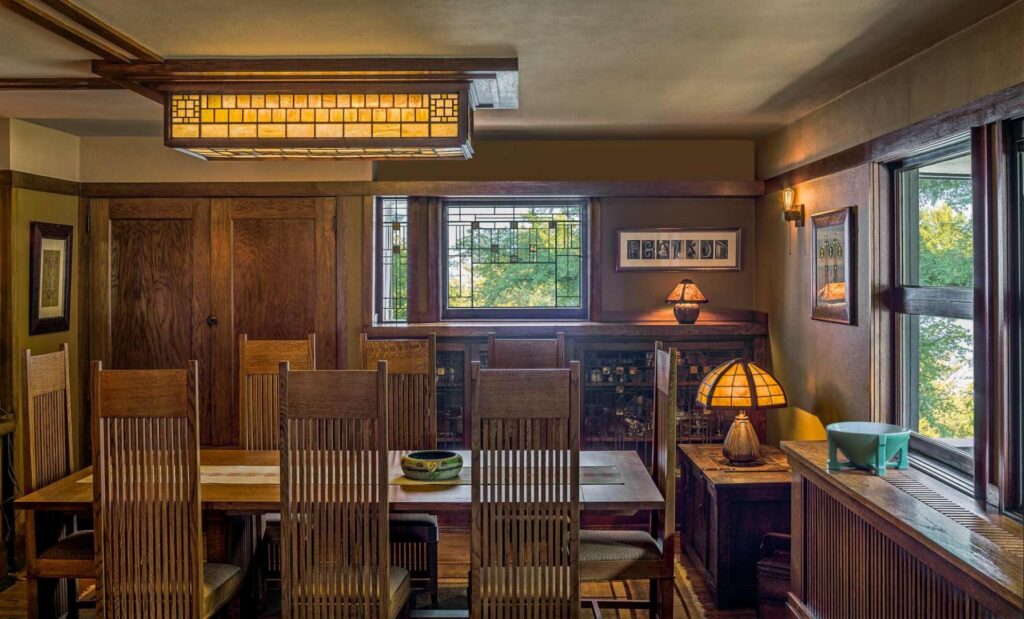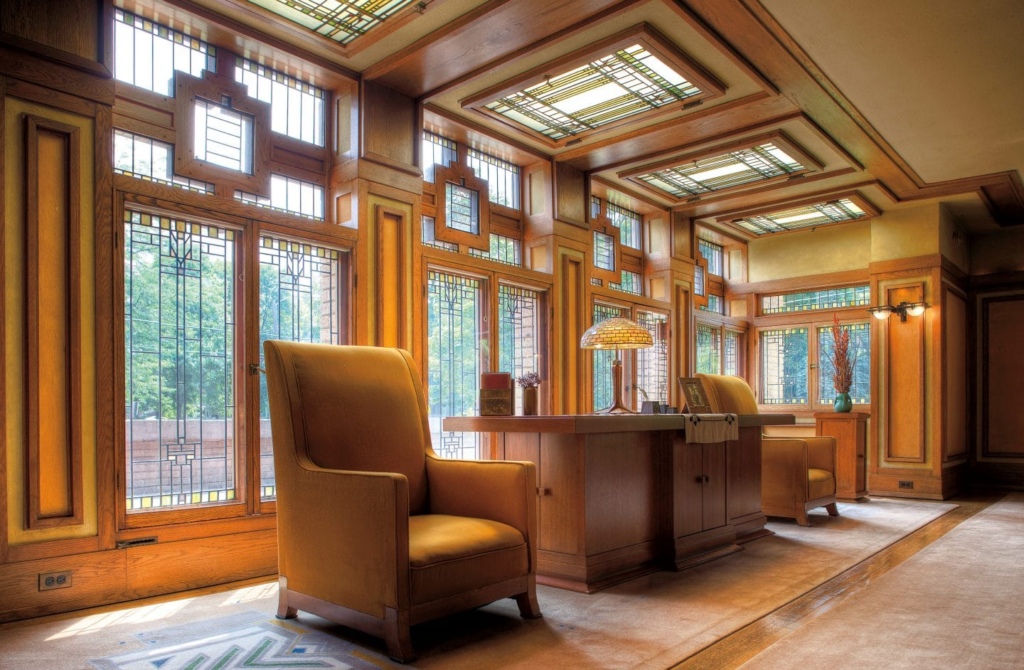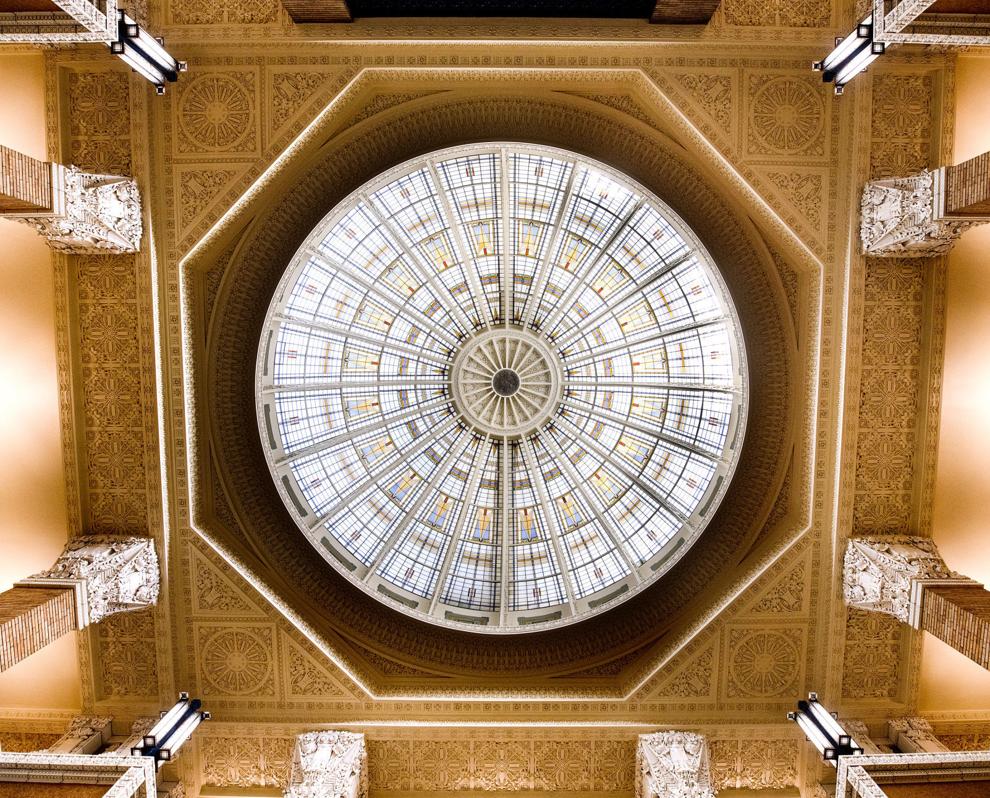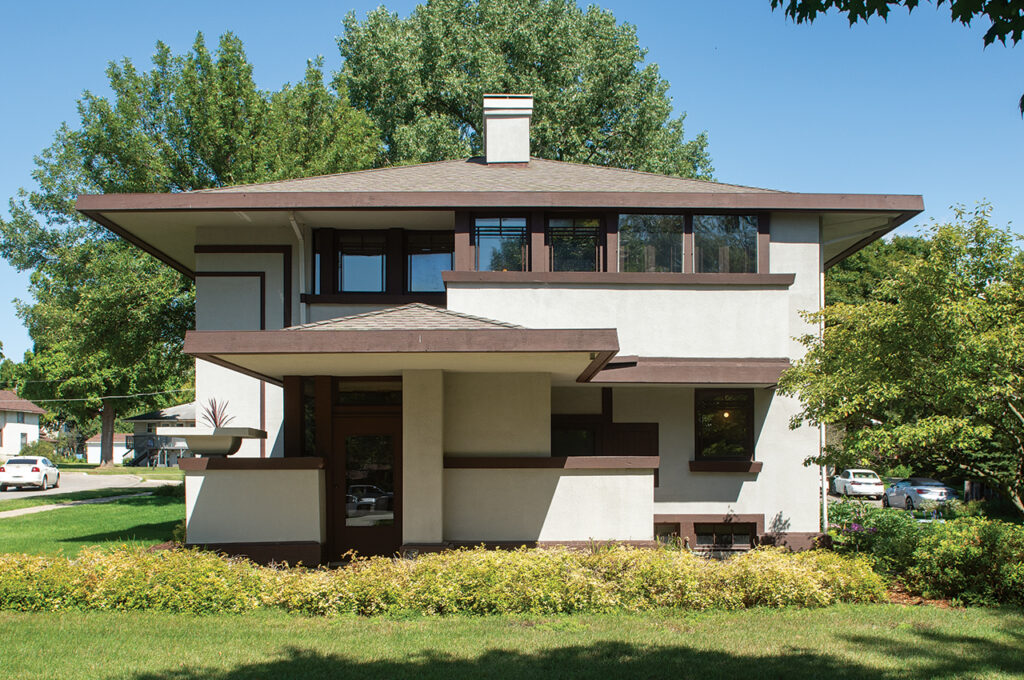Prairie Style architecture originated in Chicago at the turn of the 20th century. It was developed by a group of Chicago Architects that have came to be known as the Prairie School. Perhaps the most well known architect in the Prairie School movement was Frank Lloyd Wright. Prairie school architecture combined the ideas of the Arts and Crafts movement, with its emphasis on nature, craftsmanship and simplicity, and the work and writings of architect Louis Sullivan.
Understanding Prairie Style
Prairie Style homes emerged as a departure from the ornate and heavily adorned Victorian architecture. (Remember my previous blog post on Victorian Homes and their “more is more” approach?) Architects in the Prairie School believed that homes should serve human needs without being too showy. (Sounds like a Midwestern mantra if I’ve ever heard one! Frank Lloyd Wright sought to create homes that seamlessly blended with their natural surroundings. Prairie school architects were looking to create a completely new, distinctly American architectural style that was rooted in nature and had a strong a sense of place.
The Robie House (1908) in Chicago (pictured below) was designed by Frank Lloyd Wright is Wright’s most famous prairie home.
Characteristics
Horizontal lines are a defining features of Prairie Style homes. From the low cantilevered roof planes to the wide, open floor plans, these homes emphasized a connection to nature that was reminiscent of the strong horizontal lines found in the Midwest landscape. Horizontal emphasis was created through several techniques: 1) contrasting caps on porch and balcony railings, 2) contrasting wood trim between stories, 3) horizontal board and batten siding, 4) contrasting colors on eaves and porches.
Bringing the Outdoors In
Prairie Style homes often incorporate expansive windows that allowed natural light to flood the interiors. Good examples of these homes focus on the flow of space throughout the house, from the inside to the outside. If the interior of the home looks like a stark departure from the exterior, you’re looking at a cheap take off or a bad remodel. Windows often had nature inspired geometric patterns in small paned window glazing.
Artisanal Craftsmanship
Prairie Style architecture celebrated artisanal craftsmanship. These homes often included handcrafted furniture and meticulous millwork detailing. Prairie style homes have highly integrated interiors and exteriors, so unrelated or mass-produced furnishings were not placed in a Prairie style home. Most prairie style homes have custom or built-in furniture. Unfortunately, in my opinion, the furnishings are most where the Prairie Style falls short. While they might be stylistically integrated, the ergonomics (comfort) was often lacking. If you’ve ever sat in a chair with a 90* back, you’ll know what I mean.
Organic Materials and Earthy Tones
In keeping with their focus on creating a connection to nature, Prairie Style homes feature natural materials like wood, stone, and brick. Paint and tile colors were often earthy, nature inspired tones, like warm greens, terracotta’s, and yellows. All colors that would be found in nature.
Prairie School Examples in Iowa
Woodbury County Courthouse
We have a stunning example of Prairie School architecture right here in our neck of the woods. The Woodbury County Courthouse, completed in 1918, has been dubbed the “Jewel of the Prairie”. This four-story brick building is considered one of the county’s finest Prairie School examples. This courthouse was not far from the architecture firm that I worked in for many years and we toured it a number of years ago. I remember really enjoying the tour and I took dozens (probably hundreds) of photos, but I’m not finding them right now! 🙁 This photo is from a Sioux City Journal article on it’s 100th birthday.
Stockman House in Mason City
The Stockman House is Frank Lloyd Wright’s only Prairie house designed in Iowa. The home is one of three “concrete house cousins” Wright designed in the early 1900s.
Like What you See?
Maybe you have a Prairie Style home and want to honor the rich sensitivities of this style. Or perhaps you’d like to incorporate some of the concepts of the Prairie Style in your next project. If this has you inspired for your next project, let’s talk!
Contact me to get the conversation started!

